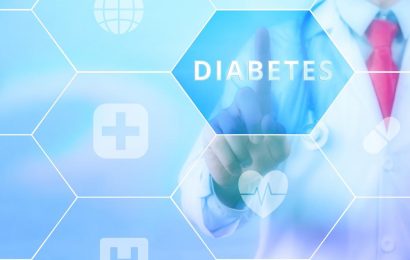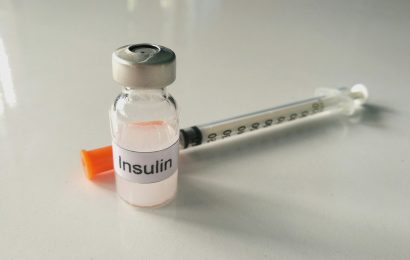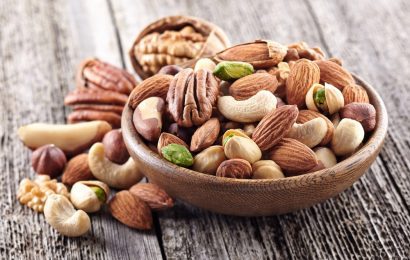Good nut news! A new study showed that eating peanuts or peanut butter with breakfast limited the rise in blood glucose after both breakfast and lunch. This “second-meal” effect was completely unexpected and exciting.
This study, “Acute and second-meal effects of peanuts on glycemic response and appetite in obese women with high type 2 diabetes risk: a randomized cross-over clinical trial,” was conducted jointly by Purdue University and the Federal University of Vicosa in Brazil. Such a long-distance collaboration couldn’t have happened just a few years ago. It was published in the June 2013 edition of the British Journal of Nutrition.
The study not only showed reduced blood glucose levels, but also reduced appetite and food consumption for most of the day in people who ate peanuts or peanut butter. This was based on levels of satiety (fullness) hormones as well as self-reports by the subjects and actual food logs.
Not only glucose levels, but nonessential fatty acid levels were lower in the people that ate peanuts or peanut butter. The level of the hormone GLP-1, was higher in the peanut butter group, which is very good news. GLP-1 is the hormone that drugs like exenatide (brand name Byetta) try to mimic. It stimulates insulin production, lowers insulin resistance, and decreases appetite.
I knew nuts were good for diabetes, but not this good! On the down side, the subjects did not have diabetes. They were “obese women at high risk for Type 2 diabetes.” So we don’t know yet how much benefit peanuts will give people who already have Type 2.
Also, the study was quite small, with only 15 subjects. I’m hoping there will be larger studies, but I’m not holding my breath. There’s not a ton of money in boosting peanuts. The American Peanut Council has some clout, but not compared to drug companies.
How much faith should we put in a study of 15 people? Probably not too much, but the risk, difficulty, expense, and unpleasantness of peanut-eating is pretty low. What have you got to lose? Especially since the food eaten in the study was probably far from the best for showing off the benefits of peanuts.
During three phases of the study, either 1 1/2 ounces of peanuts, 3 tablespoons of peanut butter, or no peanuts were consumed with a breakfast consisting of orange juice and cream of wheat. The standard lunch for subjects consisted of white bread and strawberry jam. Despite this low-protein, low-fat diet, those who ate peanut butter felt less hungry, ate less, and had better glucose numbers.
Although whole nuts and peanut butter both had benefits, peanut butter was much better. The researchers believe that peanut butter had the advantage because the fats in peanut butter are more accessible to the body than those in the whole peanuts.
What are peanuts anyway?
Botanists say peanuts aren’t really nuts. They’re legumes. What’s the difference? According to Wikipedia, the basic difference between nuts and legumes is that nuts have hard shells and legumes don’t. Peanuts seem to be somewhere in between. They have shells, but soft ones.
It probably doesn’t really matter, because both beans and nuts are great for you in similar ways. I wrote about them here and here.
What might make peanuts especially healthy? According to the Peanut Institute, peanuts have more protein than any other nut, with about 8 grams of protein per 1 ounce serving. They include a sizable dose of good fats, some vitamins and minerals, and a lot of fiber.
You can’t ask for more in a food. The deeper reason beans and nuts are so great is because they are seeds. Seeds are where all plant life comes from. We are blessed to have access to these literally life-giving foods.
To me, almost all nuts and seeds taste great. I’ve noticed that birds like them, too. So I would seriously consider eating peanuts, peanut butter, or some other nut seed or butter every day. Has anyone else out there tried them?




